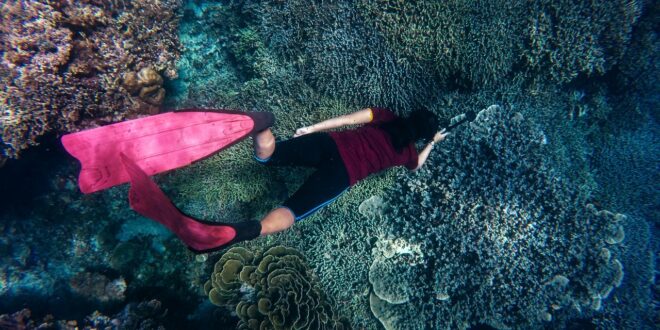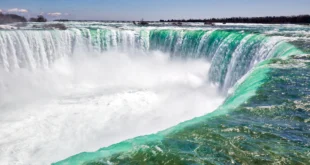All water sports, no matter where on this globe, require some kind of equipment, and snorkelling is no different.
Snorkelling involves exploring the depths of the water with equipment that allows you to breathe the surface air and see clearly under the water. You can get a different view of the ocean wildlife and immerse yourself in a new experience that’s unique in its kind. There are essential pieces of gear that can help you partake in this experience, such as a mask, snorkel and fins. Yet, as simple as it sounds, it’s easy to be overwhelmed, especially when you’re spoilt for choice with different gear brands and versions.
But don’t worry. You’re not going to look like a complete beginner on your first snorkelling trip if you read this guide from cancunsnorkeling.com first.
1. First Things, First: A Snorkelling Mask
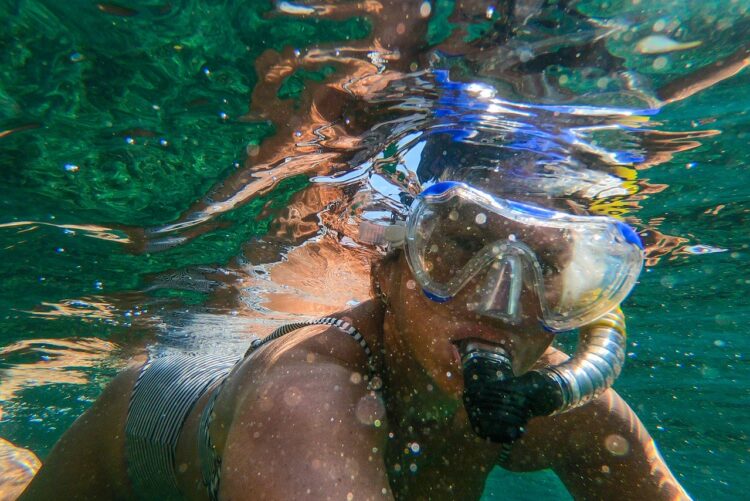
Goggles or full-face masks are the most important part of the gear that allows you to enjoy and see the underwater. Without it, and by that, we mean with your naked eyes, you would only see the blurry image underwater.
Of course, you know it, but we’re only doing our job by telling you that you need special gear that fits your face well and it’s made from high-quality material. That’s especially relevant if you’re a beginner. Look for full-face masks with anti-fogging technology that allows you to breathe through your nose and mouth without impairing vision.
When shopping for a snorkelling mask, both the material and design factor into the functionality of a quality product. Make sure you look for the specifics of a mask’s straps, skirt, lens and other features that you might need.
A mask’s skirt, for instance, should be flexible and sealed properly so that you can avoid any leakage and fogging. It should be relatively wide and made of silicone instead of rubber.
The lens should be made of sturdy materials, such as tempered glass that can withstand scratches better than plastic and, if broken, breaks into chunky pieces instead of sharp shards.
2. Snorkelling Fins
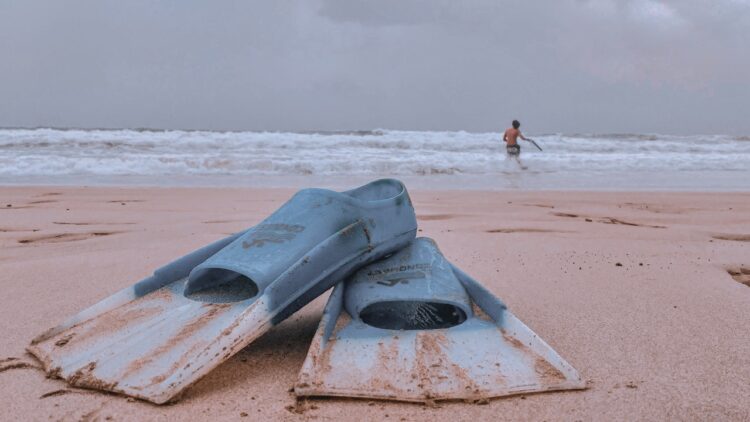
Fins are mandatory if you’re swimming in open waters where the ocean conditions are constantly changing. For instance, you can wear special water shoes on your Cancun snorkelling trip if you swim in shallow, current-free water near the shore, but if you’re venturing far into the open sea, it might be more difficult to escape the heavy currents if you don’t wear fins. ‘
Fins make snorkelling more enjoyable and efficient, especially when navigating between coral reefs and in shallow water. Decent snorkel fins should be comfortable and lightweight but strong enough to support your leg force.
If it’s your first time snorkelling, we highly recommend you visit a proper dive shop to test the fit of your fins in-store. To begin with, you can try on a pair of full-foot fins that is the same size as your shoes. To make this easier, line up the sole of the fin to the sole of the shoe you’re currently wearing to see how closely they match. Pay attention to how narrow or wide the fin is compared to your shoes, but also to its length. Keep on trying different fin models to find one that better suits your foot shape.
If you’re between sizes or need extra foot comfort, you can use fin socks made of thin neoprene or lycra to add just enough extra volume and make it a perfect fit.
3. Life Vest
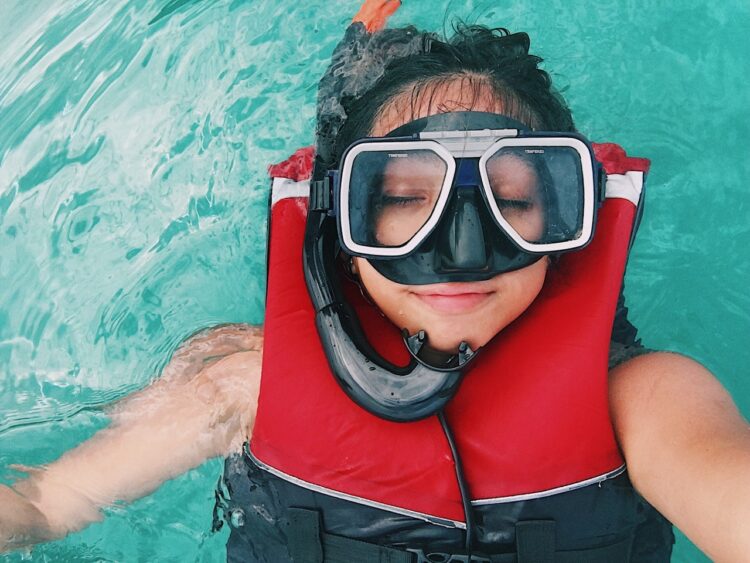
Snorkelling is for everybody. But when you’re new, and you know it, you should consider getting a life vest to protect you, especially if you plan on venturing deeper than 10 feet.
Wearing one will ensure you float on the surface even when you get tired. Normally you can rent one from any beach resort, but it’s better if you carry your own. Safety always comes first, and life vests can offer a few advantages. If you get too tired or you have a panic attack, the life vest makes sure you will be able to keep your upper body above sea level so you can breathe.
The other safety advantage is their strident colour. Obviously, you can buy any colour you please, but with the condition, it has some bright neon features as well. In case of emergency, a strident life-vest will attract the attention of not only lifeguards but also the surrounding snorkels and swimmers.
4. Rash Guard or Wetsuit
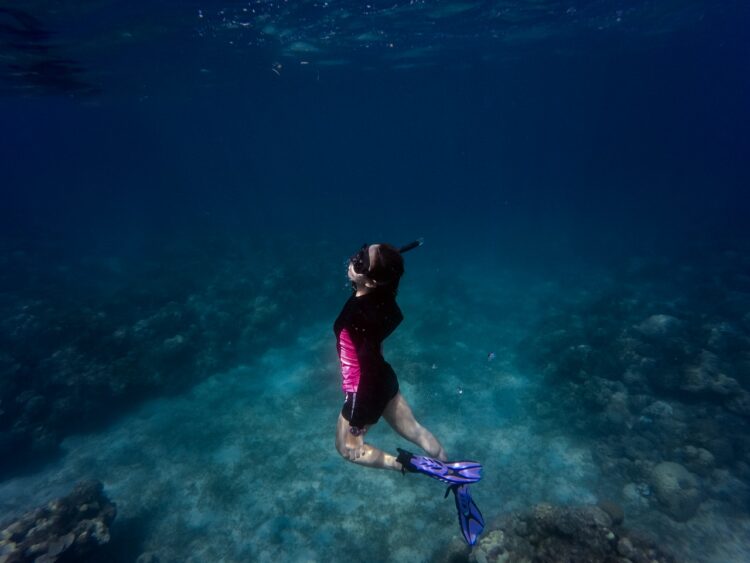
Most of the time, you will be under the water, but that doesn’t mean you should not protect your body from the stingy UV rays, saltwater, and jellyfish. Besides, swimming in the cold ocean isn’t always a delight, so it’s better to maintain your temperatures. Be smart and pack a swimming suit that is long enough to cover your extremities comfortably. It should be well-fit on your body, without bunching or sagging in the arms and legs.
However, if the water temperature fluctuates, it may be best to have wetsuits for warm water and another one for cold water to use throughout your trip.
While we can’t tell you what to buy, the temperature of the water will help you determine the ideal wetsuit thickness to buy. For instance, if you plan on swimming in 60 to 70 degrees, a 3mm wetsuit will be just right. If you hate the cold, you might want to look for a wetsuit that offers a little extra insulation.
Before you take the plunge…
With the right gear in your summer arsenal, you can be sure to enjoy your next snorkelling adventure. While it’s an easy and fun sport to learn, you should follow every safety guideline that comes with every snorkelling gear you buy. No matter where you stand, there are a few rules that you should learn and follow so that your water experience will be safe and comfortable.
 Hi Boox Popular Magazine 2024
Hi Boox Popular Magazine 2024
